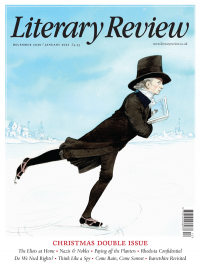Rana Mitter
Setting the World Ablaze
Underground Asia: Global Revolutionaries and the Assault on Empire
By Tim Harper
Allen Lane 864pp £35
In 1923, a group photograph was passed around the security agencies of the West. Placed in the centre was Grigory Zinoviev, the head of the Comintern, the agency charged with exporting the Bolshevik Revolution to the wider world. But elsewhere in the picture were three Asians, each of whom would play a pivotal role in the revolutionary changes that marked their continent in the 20th century. They were Tan Malaka from the Dutch East Indies, M N Roy from India and Nguyen Ai Quoc from French Indochina (who would become better known as Ho Chi Minh). As Tim Harper argues in his compelling and highly original Underground Asia, they were part of ‘the greatest missionary undertaking of the modern age’. They were communists who had been trained in Moscow to foment global revolution, but they were also nationalists, dedicated to freeing their countries from imperial rule. They have generally been seen through one lens or the other, either as men shaped by Moscow or as patriots for whom other ideologies were secondary. That was certainly one of the mistakes made during the Vietnam War by the Americans, who failed to appreciate that Ho Chi Minh was a nationalist as much as a communist. In fact all three of these men were more than the sum of their parts, shaped by global networks rarely understood or even explored.
Harper shows that the roots of the great Asian revolutions of the postwar era lay in complex global interactions that took place in the early part of the 20th century, when Mexico was as important a place in the global revolutionary struggle as Calcutta or Canton. He takes a period

Sign Up to our newsletter
Receive free articles, highlights from the archive, news, details of prizes, and much more.@Lit_Review
Follow Literary Review on Twitter
Twitter Feed
Few writers have been so eagerly mythologised as Katherine Mansfield. The short, brilliant life, the doomed love affairs, the sickly genius have together blurred the woman behind the work.
Sophie Oliver looks to Mansfield's stories for answers.
Sophie Oliver - Restless Soul
Sophie Oliver: Restless Soul - Katherine Mansfield: A Hidden Life by Gerri Kimber
literaryreview.co.uk
Literary Review is seeking an editorial intern.
Though Jean-Michel Basquiat was a sensation in his lifetime, it was thirty years after his death that one of his pieces fetched a record price of $110.5 million.
Stephen Smith explores the artist's starry afterlife.
Stephen Smith - Paint Fast, Die Young
Stephen Smith: Paint Fast, Die Young - Jean-Michel Basquiat: The Making of an Icon by Doug Woodham
literaryreview.co.uk